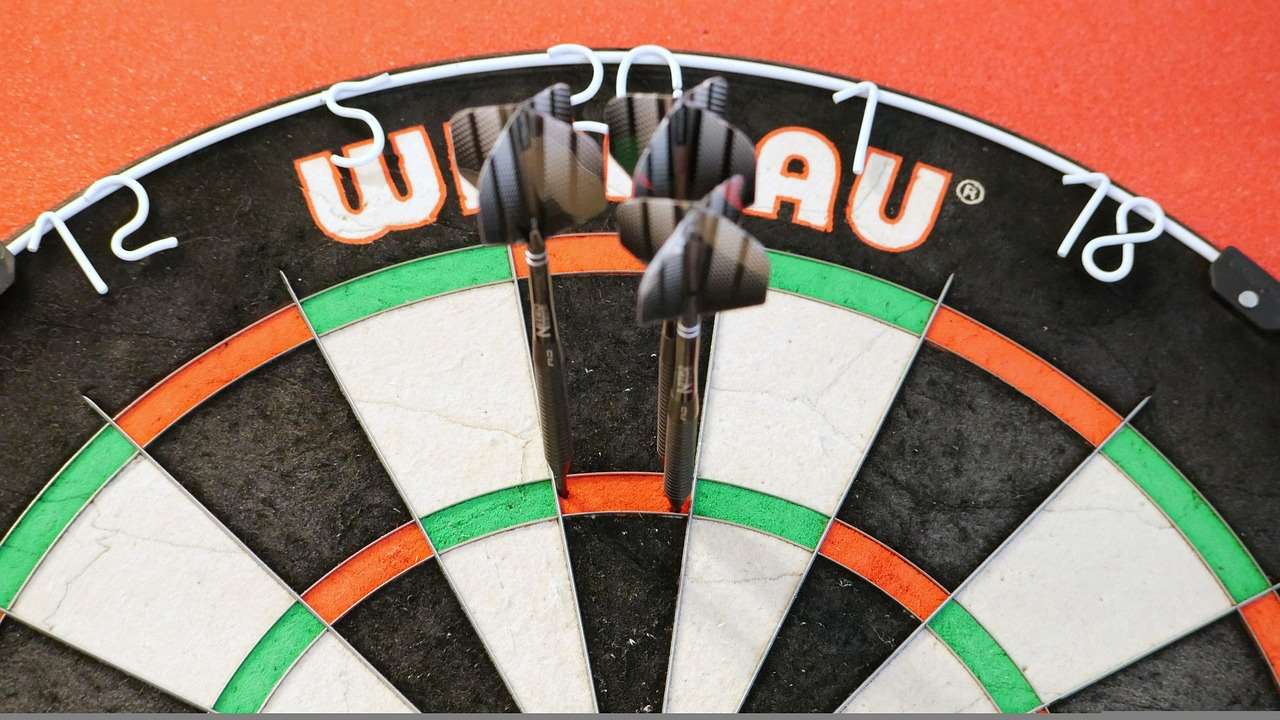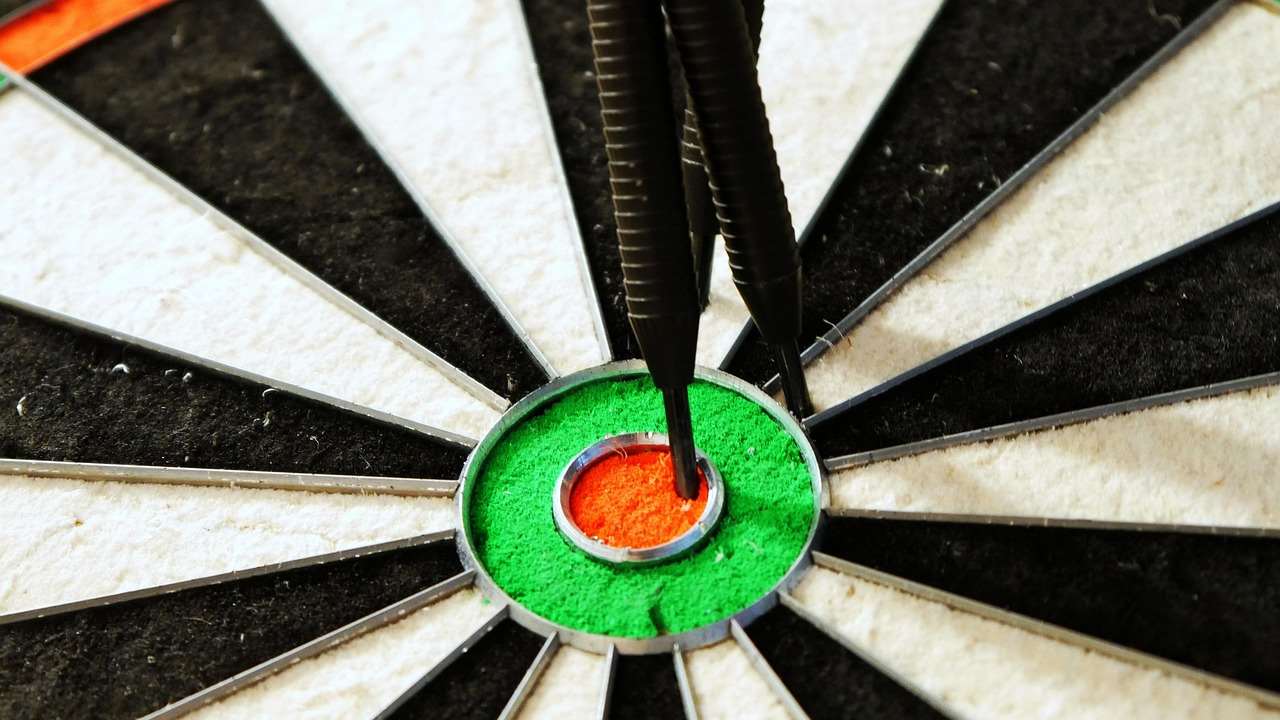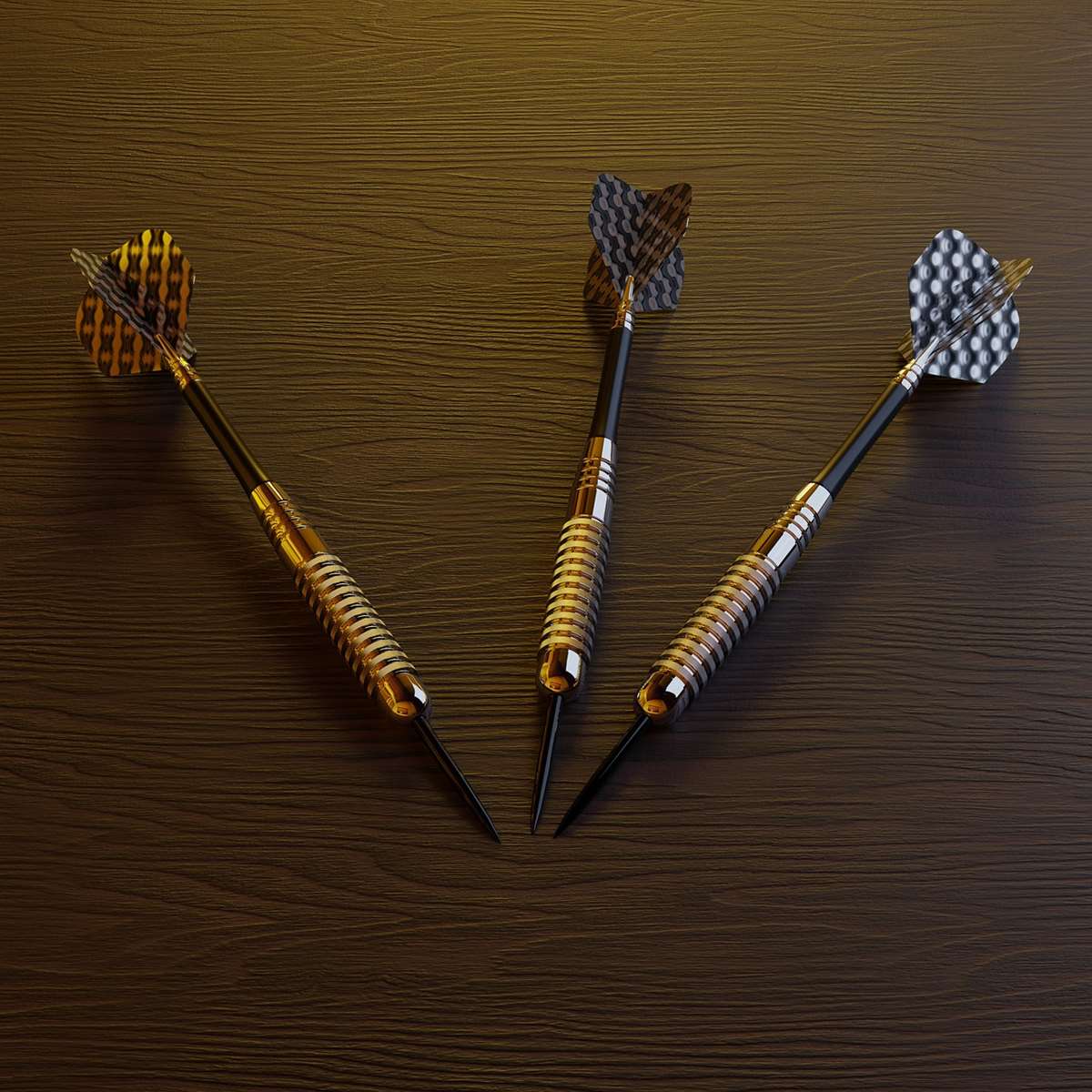A good dartboard stand provides a stable, portable, and space-saving solution for enjoying darts anywhere; it eliminates the need for permanent wall mounting. This article will explore the different types of stands, factors to consider when choosing one, and tips for setting it up for the perfect game.
⚠️ Still Using Pen & Paper (or a Chalkboard)?! ⚠️
Step into the future! The Dart Counter App handles all the scoring, suggests checkouts, and tracks your stats automatically. It's easier than you think!
Try the Smart Dart Counter App FREE!Ready for an upgrade? Click above!
Choosing the Right Dartboard Stand
Selecting the ideal dartboard stand involves considering several factors to ensure it meets your specific needs and preferences. From stability and portability to material and budget, each aspect plays a crucial role in enhancing your dart-playing experience.
Stability and Balance
The primary function of a dartboard stand is to provide a stable and secure platform for your dartboard. A wobbly or unstable stand can significantly impact your accuracy and enjoyment of the game. Look for stands with a wide base and sturdy construction. Many stands feature adjustable feet to compensate for uneven surfaces. Consider the weight capacity of the stand to ensure it can adequately support your dartboard without tipping or swaying. Some heavier boards might require a more robust stand.

Portability and Storage
If you plan to move your dartboard frequently, portability is a key consideration. Folding or collapsible dartboard stands are ideal for easy transportation and storage. Look for stands that are lightweight yet durable. Wheels can also be a convenient feature for moving the stand around your home or to different locations. When considering storage, think about how much space you have available and choose a stand that can be easily tucked away when not in use. The ability to quickly assemble and disassemble the stand is also a plus for those who value convenience.
Material and Durability
The material of a dartboard stand directly affects its durability and longevity. Common materials include steel, aluminum, and wood. Steel stands are generally the most durable and offer excellent stability. Aluminum stands are lighter and more portable, but may not be as robust as steel. Wooden stands can add a touch of elegance to your game room but may require more maintenance. Check for rust-resistant coatings or finishes to protect the stand from the elements, especially if you plan to use it outdoors. A high-quality stand should withstand regular use and last for years.
Budget Considerations
Dartboard stands are available in a wide range of price points, so it’s important to set a budget before you start shopping. Entry-level stands are typically made from less durable materials and may not offer the same level of stability as higher-end models. However, they can still be a good option for casual players. Mid-range stands offer a good balance of quality and affordability, while premium stands boast superior materials, construction, and features. Consider your playing frequency and budget when making your decision. Investing in a slightly more expensive stand can pay off in the long run with increased durability and stability.
Types of Dartboard Stands
Dartboard stands come in various designs, each offering unique advantages and disadvantages. Understanding the different types can help you choose the one that best suits your needs and playing environment. Exploring options such as freestanding dartboard stands, portable dartboard stands and extendable dartboard stands, ensures you are well informed before purchasing.
Freestanding Dartboard Stands
Freestanding dartboard stands are the most common type and offer excellent stability and versatility. They typically feature a wide base and adjustable height to accommodate different players. Freestanding stands are ideal for both casual and serious players who want a stable platform for their dartboard. They can be easily moved around your home or game room and require no permanent installation. Some models also include features like scoreboards or dart holders for added convenience.
Portable Dartboard Stands
Portable dartboard stands are designed for easy transportation and storage. They are typically lightweight and collapsible, making them ideal for taking your dartboard on the go. Portable stands are a great option for players who want to practice or compete in different locations. Look for stands that come with a carrying case for added protection and convenience. While portable stands may not be as stable as freestanding models, they still provide a decent playing experience.

Extendable Dartboard Stands
Extendable dartboard stands offer the flexibility to adjust the height of the dartboard to accommodate players of different heights. This is particularly useful for families or groups of friends who have a wide range of player heights. Extendable stands typically feature a telescopic design that allows you to easily raise or lower the dartboard. Some models also include built-in leveling mechanisms to ensure the dartboard is perfectly aligned. Extendable stands are a great option for those who want a customizable and versatile playing experience. Remember to check that you adhere to darts oche clear regulations.
Setting Up Your Dartboard Stand
Proper setup is crucial for ensuring your dartboard stand provides a safe and enjoyable playing experience. Following these steps will help you get your dartboard stand up and running in no time.
Assembly Instructions
Start by carefully reading the assembly instructions that come with your dartboard stand. Each stand is different, so it’s important to follow the manufacturer’s recommendations. Lay out all the parts and identify them before you begin. Use the provided tools or your own to assemble the stand according to the instructions. Make sure all screws and bolts are tightened securely to ensure stability. If you encounter any difficulties, refer to the manufacturer’s website or contact customer support for assistance.
Positioning Your Dartboard
Once the stand is assembled, position your dartboard at the correct height. The official height from the floor to the center of the bullseye is 5 feet 8 inches (1.73 meters). Use a measuring tape or level to ensure accuracy. Place the dartboard stand on a flat and stable surface. Avoid placing it near doorways or in areas with heavy foot traffic to prevent accidents. Make sure there is ample space around the stand for players to throw their darts safely. Consider adding a dartboard surround to protect your walls from stray darts.
Leveling and Securing
Use a level to ensure the dartboard is perfectly vertical. Many dartboard stands come with adjustable feet that allow you to compensate for uneven surfaces. Adjust the feet until the dartboard is level and stable. Once the dartboard is level, tighten the locking mechanisms to secure the stand in place. Double-check that all screws and bolts are tightened to prevent wobbling or tipping. A properly leveled and secured dartboard stand will provide a safe and consistent playing experience.
Maximizing Your Dartboard Stand Experience
Beyond the basics, there are several ways to enhance your dartboard stand setup and overall dart-playing experience. From lighting to scorekeeping, these tips will help you create the ultimate dart zone.
Proper Lighting
Adequate lighting is essential for accurate dart throwing. Position a light source above and slightly in front of the dartboard to eliminate shadows. You can use a dedicated dartboard light or a standard lamp with a bright bulb. Avoid placing the light source directly behind the player, as this can create glare and make it difficult to see the target. Good lighting will improve your visibility and accuracy, leading to a more enjoyable game. Some dartboard stands have integrated lighting systems.
Dartboard Surround Protection
Protect your walls from stray darts by using a dartboard surround. A surround is a ring of soft material that surrounds the dartboard and catches any darts that miss the target. Surrounds are available in various materials, including foam, rubber, and cork. They are easy to install and provide excellent protection for your walls. A surround can also help to reduce noise and prevent damage to your darts. Investing in a good quality surround is a smart way to prolong the life of your dartboard and protect your home. Remember to check if there is a darts counter system in place when playing with others.

Scorekeeping Options
Keep track of your scores using a scoreboard or a darts scoring app. A traditional chalkboard or whiteboard is a simple and effective way to record scores. Alternatively, you can use a darts scoring app on your smartphone or tablet. Many apps offer features like automatic scoring, player tracking, and game statistics. Some dartboard stands even come with built-in scoreboards. Choose a scorekeeping method that suits your preferences and makes it easy to track your progress. There are free and paid versions of a darts scoring app android available to download.
Troubleshooting Common Issues with Dartboard Stands
Even with careful setup and maintenance, you may encounter some common issues with your dartboard stand. Here are some troubleshooting tips to help you resolve them.
Wobbling and Instability
If your dartboard stand is wobbling or unstable, check the following: Ensure that all screws and bolts are tightened securely. Adjust the feet to compensate for uneven surfaces. Make sure the stand is placed on a flat and stable surface. If the stand is still wobbling, try adding weight to the base for added stability. A sandbag or a weight plate can help to keep the stand firmly planted on the ground. If the problem persists, consider replacing the stand with a more robust model.
Dartboard Slippage
If your dartboard is slipping or rotating on the stand, check the following: Ensure that the dartboard is properly mounted to the stand. Tighten the mounting hardware securely. Use a dartboard mounting kit to ensure a snug fit. If the dartboard is still slipping, try adding a rubber washer between the dartboard and the stand to provide extra grip. Regularly check the mounting hardware to ensure it remains tight and secure. Consider the Dart game scoring app for a smooth game.

Rust and Corrosion
If your dartboard stand is showing signs of rust or corrosion, take the following steps: Clean the affected areas with a wire brush or sandpaper to remove the rust. Apply a rust-resistant primer to the metal surfaces. Paint the stand with a rust-resistant paint to protect it from further corrosion. Store the stand in a dry environment to prevent moisture buildup. Regularly inspect the stand for signs of rust and take action promptly to prevent further damage. Consider purchasing a stand made from rust-resistant materials like stainless steel or aluminum.
Conclusion
Choosing the right dartboard stand is essential for creating a stable, portable, and enjoyable dart-playing experience. By considering factors like stability, portability, material, and budget, you can find a stand that meets your specific needs. Remember to set up your stand properly, use adequate lighting, and protect your walls with a dartboard surround. With the right stand and accessories, you’ll be ready to enjoy countless hours of dart-throwing fun. Now that you’re armed with this knowledge, find the perfect dartboard stand and elevate your game today!
Hi, I’m Dieter, and I created Dartcounter (Dartcounterapp.com). My motivation wasn’t being a darts expert – quite the opposite! When I first started playing, I loved the game but found keeping accurate scores and tracking stats difficult and distracting.
I figured I couldn’t be the only one struggling with this. So, I decided to build a solution: an easy-to-use application that everyone, no matter their experience level, could use to manage scoring effortlessly.
My goal for Dartcounter was simple: let the app handle the numbers – the scoring, the averages, the stats, even checkout suggestions – so players could focus purely on their throw and enjoying the game. It began as a way to solve my own beginner’s problem, and I’m thrilled it has grown into a helpful tool for the wider darts community.